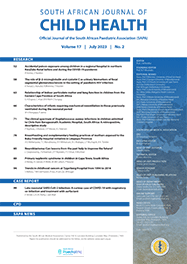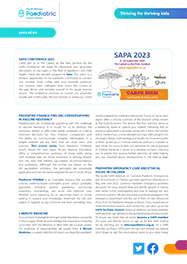Review

Hypoxic-ischaemic encephalopathy: Identifying newborns who will benefit from therapeutic hypothermia in developing countries
Abstract
Hypoxic-ischaemic encephalopathy (HIE) is only one of the many causes of neonatal encephalopathy, with no definitive test to make the diagnosis and very little available in terms of neuroprotective strategies, except for the use of therapeutic hypothermia (TH). TH improves survival and neurodevelopmental outcome at 18 months of age in neonates with moderate or severe encephalopathy. Based on this evidence, the International Liaison Committee on Resuscitation has recommended TH as standard of care since 2010. Low-cost methods of administering TH in low- and middle-income countries are effective as long as intensive care facilities are available, and provided that a TH guideline based on published international trials is in place. A local guideline, taking into consideration the care capable at different hospital levels, would be valuable in a developing country with resource constraints and increasing litigation.
Author's affiliations
M Coetzee, Division of Neonatology, Department of Paediatrics and Child Health, School of Medicine, University of Pretoria, South Africa
Full Text
Cite this article
Article History
Date published: 2018-12-14
Article Views
Full text views: 1599

.jpg)



Comments on this article
*Read our policy for posting comments here